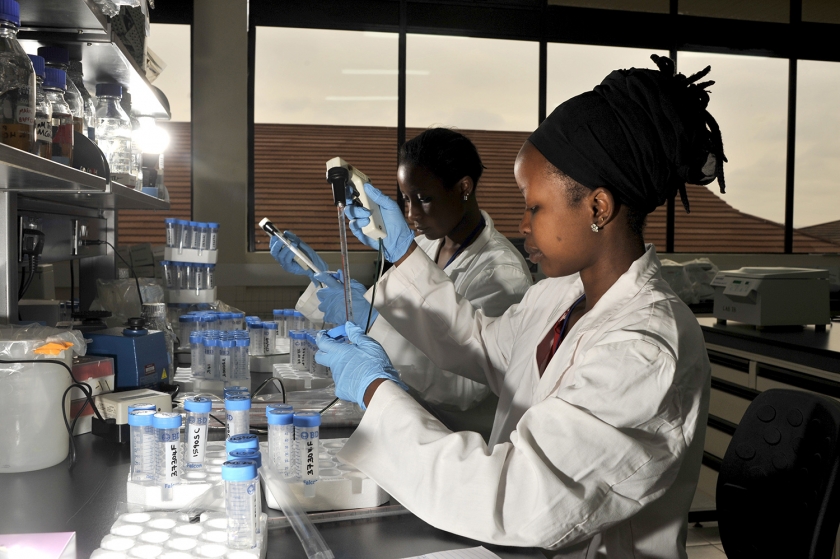Ebola, SARS, Zika, HIV/AIDS, West Nile fever and now COVID-19. These are some of the highest-profile diseases to emerge in the last several decades. And while they emerged in different parts of the world, they have one thing in common. They are what scientists call “zoonotic diseases,” infections that jump between animals and humans, some of which leave illness and death in their wake.
Now, a scientific assessment from the UN Environment Programme (UNEP) and the International Livestock Research Institute (ILRI) finds that unless countries take dramatic steps to curb zoonotic contagions, global outbreaks like COVID-19 will become more common.
“People look back to the influenza pandemic of 1918–1919 and think that such disease outbreaks only happen once in a century,” says Maarten Kappelle, the head of scientific assessments at UNEP. “But that’s no longer true. If we don’t restore the balance between the natural world and the human one, these outbreaks will become increasingly prevalent.”
The assessment, Preventing the next pandemic: Zoonotic diseases and how to break the chain of transmission, published on 6 July, describes how 60 per cent of the 1,400 microbes known to infect humans originated in animals.
While emerging contagions like COVID-19 dominate headlines, neglected zoonotic diseases kill at least 2 million people every year, mostly in developing countries. That is more than four times the current reported death toll of COVID-19.
“Zoonotic diseases, for me, really centre on issues like poverty and inequality. These diseases disproportionately affect people in less-developed countries. It’s only when a pandemic like COVID-19 happens that they start to become everyone’s problem.” Doreen Robinson, UNEP’s Chief of Wildlife
Zoonotic diseases have plagued societies since Neolithic times and were responsible for some of history’s deadliest pandemics, including the bubonic plague of the late Middle Ages and the influenza pandemic of the early twentieth century.
But as the world’s population edges towards 8 billion, rampant development is putting humans and animals in increasingly close quarters, making it easier for diseases to vault between species.
“As we exploit more marginal areas, we are creating opportunities for transmission,” says Eric Fèvre, a professor of veterinary infectious diseases at the University of Liverpool and a jointly appointed ILRI researcher. “There is an increasing risk of seeing bigger epidemics and, eventually, a pandemic of the COVID-19 type as our footprint on the world expands.”
The cost of zoonotic epidemics is steep. The International Monetary Fund has predicted that COVID-19 alone will cause the global economy to contract by 3 per cent this year, wiping out $9 trillion in productivity through 2021. But even in the two decades before the pandemic, the World Bank estimated that zoonotic diseases had direct costs of more than $100 billion.
To prevent future outbreaks, countries need a coordinated, science-backed response to emerging zoonotic diseases, says Delia Grace, lead author of the report as well as a veterinary epidemiologist at ILRI and professor of food safety at the UK’s Natural Resources Institute. “Viruses don’t need a passport. You cannot tackle these issues on a nation-by-nation basis. We must integrate our responses for human health, animal health, and ecosystem health to be effective.”
UNEP and ILRI are urging governments to embrace an inter-sectoral and interdisciplinary approach called One Health. It calls on states not only to buttress their animal as well as human healthcare systems, but also to address factors – like environmental degradation and increased demand for meat –that make it easier for diseases to jump species. Specifically, it encourages states to promote sustainable agriculture, strengthen food safety standards, monitor and help improve traditional food markets, invest in technology to track outbreaks, and provide new job opportunities for people who trade in wildlife.
Robinson says it’s also important for governments to better understand how zoonotic diseases work. That could help the world avoid another pandemic on the scale of COVID-19.
“Getting ahead of the game and preventing the type of global shutdown we’ve seen—that’s what investing in zoonotic research will get you,” she says. “Outbreaks will happen. Pathogenic organisms will jump from animals to humans, and back to animals again. The question is: How far will they jump and what impact will they have?”


Recent Comments